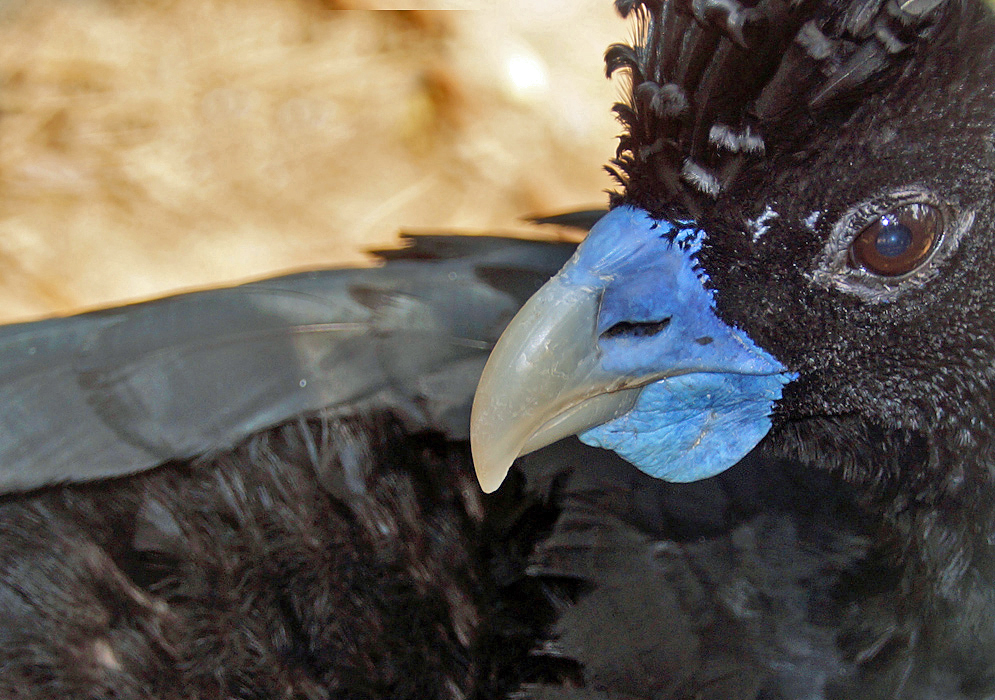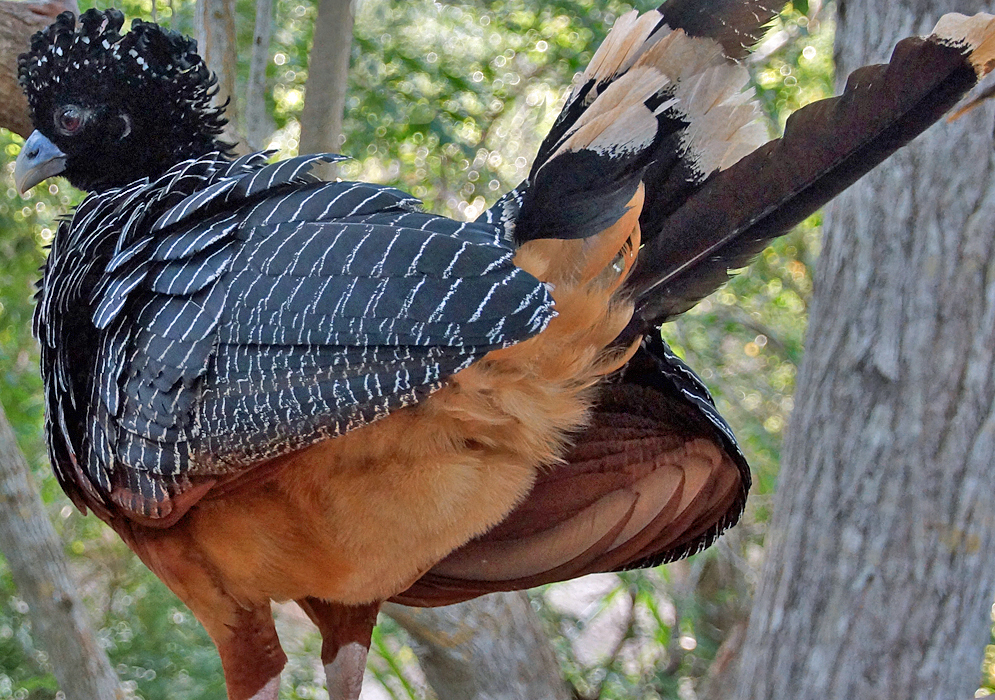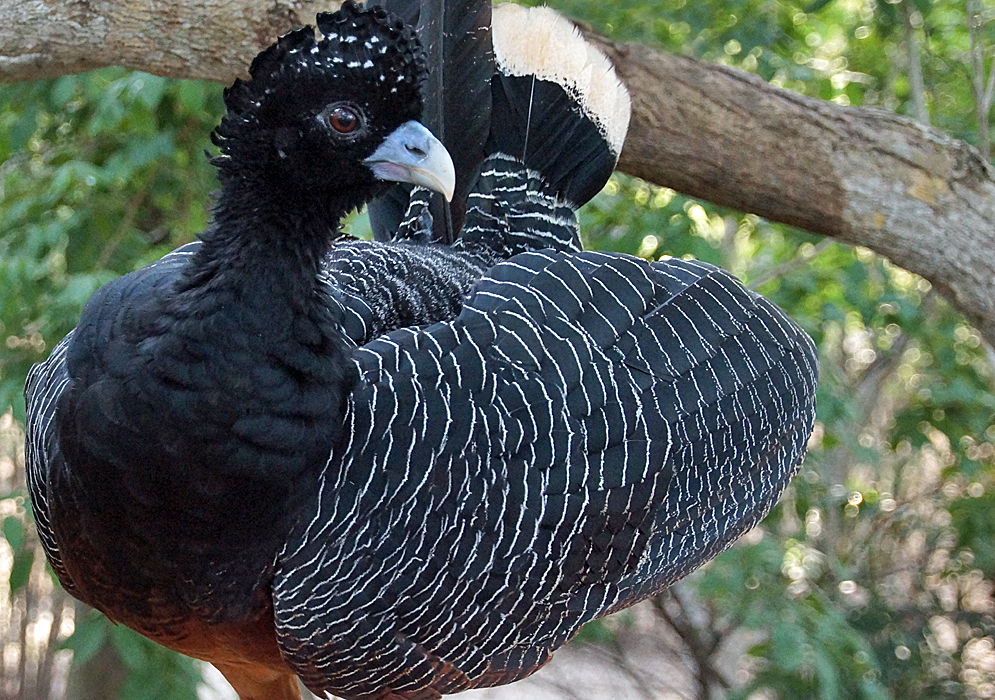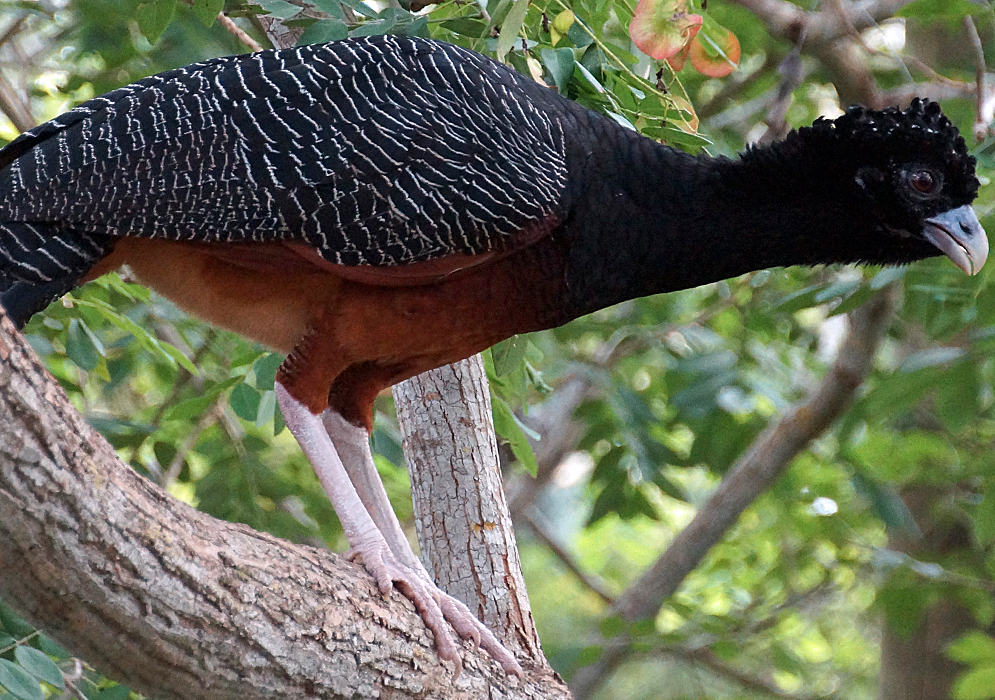This post has 11 Simple Fields-fields attached. Show fields.

The Blue-billed Curassow, is endemic to Colombia and is particularly notable for its striking appearance and unique behaviors. Adult birds typically range from 2.7 to 3.0 feet in length and weigh between 7.1 to 7.9 pounds. The species is distinguished by its blue cere and wattle, which are unique to this bird. Males exhibit a mostly black plumage with a white vent and tail tip, while females are also primarily black but have a rufous lower belly and vent. Both sexes display an erectile crest, with males having a black crest and females a black and white one. Blue-billed Curassow is found exclusively in northern Colombia, inhabiting undisturbed forests in the tropical and upper tropical zones. Its range is highly fragmented, stretching from La Guajira and Magdalena Departments south to Antioquia and Boyacá Departments, primarily from near sea level to about 2,000 feet. The bird's diet mainly consists of fruits, worms, and insects, and it is known to ingest sand and small stones to aid digestion. The breeding season for the Blue-billed Curassow spans from December to at least April. They are reported to be monogamous, constructing large nests of sticks and dead leaves concealed in dense vine tangles, typically placed between the understory and the subcanopy. A typical clutch comprises two eggs. Regrettably, the Blue-billed Curassow is currently assessed as Critically Endangered by the IUCN, with its population estimated to be fewer than 1,500 mature individuals. The primary threats to this species are deforestation and hunting.







